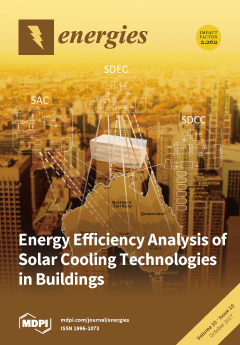Adsorption of hydrocarbons may significantly affect hydrocarbon migration in unconventional reservoirs. Clay minerals form the primary adsorbent surfaces for hydrocarbons adsorbed in mudstone/shale. To study the adsorption properties of hydrocarbons (n-decane (C
10H
22), methyl cyclohexane (C
7H
14) and toluene (C
7H
8)) on clay minerals (i.e., cookeite, ripidolite, kaolinite, illite, illite/smectite mixed-layer, Na-montmorillonite and Ca-montmorillonite), hydrocarbon vapor adsorption (HVA) tests were conducted at 298.15 K. The results showed that (i) the adsorption amounts of C
10H
22, C
7H
14 and C
7H
8 ranged from 0.45–1.03 mg/m
2, 0.28–0.90 mg/m
2 and 0.16–0.53 mg/m
2, respectively; (ii) for cookeite, ripidolite and kaolinite, the adsorption capacity of C
10H
22 was less than C
7H
14, which was less than C
7H
8; (iii) for illite, Na-montmorillonite and Ca-montmorillonite, the adsorption capacity of C
10H
22 was greater than that of C
7H
8, and the adsorption capacity of C
7H
14 was the lowest; (iv) for an illite/smectite mixed-layer, C
7H
14 had the highest adsorption capacity, followed by C
10H
22, and C
7H
8 had the lowest capacity. Adsorption properties were correlated with the microscopic parameters of pores in clay minerals and with experimental pressure. Finally, the weighted average method was applied to evaluate the adsorption properties of C
10H
22, C
7H
14 and C
7H
8 on clay minerals in oil-bearing shale from the Shahejie Formation of Dongying Sag in the Bohai Bay Basin, China. For these samples, the adsorbed amounts of C
7H
14 ranged from 18.03–28.02 mg/g (mean 23.33 mg/g), which is larger than that of C
10H
22, which ranges from 15.40–21.72 mg/g (mean 18.82 mg/g). The adsorption capacity of C
7H
8 was slightly low, ranging from 10.51–14.60 mg/g (mean 12.78 mg/g).
Full article





